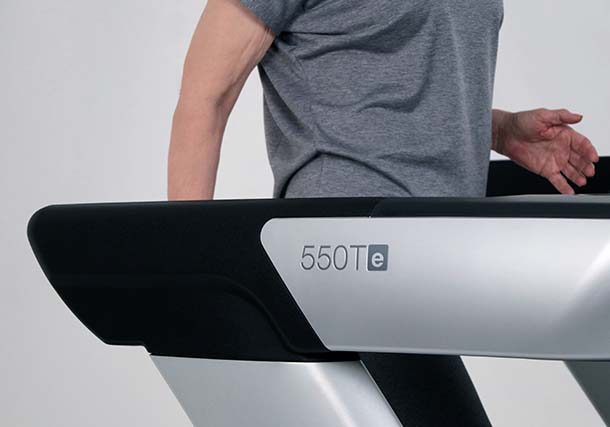
Exercise-Induced Asthma
When it comes to physical activity and wellness, exercise is often hailed as a cornerstone of a healthy lifestyle. However, for a significant portion of the population, engaging in exercise can trigger a condition that disrupts the very process that sustains life: breathing. This is known as exercise-induced asthma (EIA), a complex and often misunderstood respiratory condition.
Exercise-induced asthma presents a unique challenge to individuals who want the benefits of physical exertion but find themselves grappling with its unintended consequences on their respiratory system. Unlike most common types of asthma triggered by allergens or irritants, EIA specifically occurs during or after physical activity.
Proper diagnosis and management of exercise-induced asthma are crucial. Misdiagnosis can lead those who suffer from EIA to avoid physical activity, potentially compromising overall health and quality of life. At Carolina Asthma & Allergy Center, we can help you learn more about EIA, including its symptoms, triggers, and potential complications, to collaborate with our professionals on effective strategies to manage this condition.
How to Request an Appointment
If you suspect you may be experiencing exercise-induced asthma or have difficulty breathing following physical activity, regardless of its intensity, Carolina Asthma & Allergy Center is here to offer a thorough evaluation and treatment plan. Our devoted team includes certified allergists and highly skilled healthcare professionals who are dedicated to assisting you on your journey to better respiratory health.
Scheduling an appointment is a straightforward process – simply contact our office by phone or make use of the online appointment request form available on our official website. Our friendly staff will collaborate with you to find a suitable date and time for your visit.
When you arrive for your appointment, our allergists will conduct a comprehensive review of your medical history and perform a thorough physical examination. To determine the presence of asthma, we will conduct a series of tailored tests designed to meet your specific needs.
Following the assessment and receipt of test results, our proficient team will craft a personalized treatment plan. This approach is designed to effectively manage your asthma symptoms and proactively prevent future lung capacity issues. Don’t hesitate to reach out to us now to begin the appointment scheduling process and take the first step toward gaining a comprehensive understanding of your asthma while effectively managing it.
What is Exercise-Induced Asthma?
Exercise-induced asthma (EIA) is a distinctive form of asthma characterized by the narrowing of airways during or after vigorous physical activity. This bronchoconstriction leads to symptoms like wheezing, shortness of breath, coughing, and chest tightness.
While the exact cause remains under investigation, it is thought that the rapid inhalation of cool, dry air during exercise may contribute to airway inflammation and constriction in susceptible individuals.

What are the Symptoms of Exercise-Induced Asthma?
EIA has a range of symptoms that often occur during or after physical activity. These can include:
- Wheezing: A high-pitched whistling sound when breathing, caused by narrowed airways.
- Shortness of Breath: Feeling out of breath, even with mild exertion.
- Coughing: Persistent coughing, especially during or after exercise.
- Chest Tightness: A sensation of pressure or discomfort in the chest.
- Reduced Exercise Tolerance: Feeling unable to sustain physical activity as long or as intensely as usual.
When to Seek Medical Help
If you experience any of the above symptoms regularly during or after exercise, it’s a good idea to consult an experienced allergist. Additionally, seek medical attention if:
- Symptoms worsen or become more frequent.
- Symptoms occur even when you’re not engaging in intense physical activity.
- You’re unsure whether your symptoms are related to exercise-induced asthma or another condition.
Impact on Daily Life and Exercise Routine
Exercise-induced asthma can influence both daily life and exercise habits. Individuals might start avoiding physical activities that trigger their symptoms, leading to reduced exercise and potential challenges to fitness levels.
However, with proper management, EIA doesn’t need to hinder your ability to exercise. Effective strategies and medical guidance can help individuals stay active and enjoy the benefits of fitness without respiratory discomfort.
Common EIA Triggers
EIA can be triggered by a variety of factors beyond exercise itself. Cold and dry air, which is prevalent in activities like winter sports, walking or jogging in cold weather, and even indoor ice skating, is a common culprit.
High-intensity exercises that require rapid breathing, such as sprinting or competitive sports, can also increase the likelihood of an EIA episode. Athletes dealing with sports induced asthma can learn more about safe exercise practices and management strategies. Additionally, environmental factors like pollen, pollution, or respiratory infections can exacerbate the condition, leading to a complex interplay of triggers.
How EIA Is Different Than Other Types of Asthma
What sets EIA apart from other forms of asthma lies in its trigger and timing.
Traditional asthma is often linked to allergens, irritants, or specific conditions, resulting in chronic symptoms. In contrast, EIA is a short-lived phenomenon directly related to physical exertion. While traditional asthma management strategies may overlap with EIA, the timing and specific triggers require tailored approaches.
Distinguishing between EIA and other asthma types helps emphasize the importance of accurate diagnosis to ensure that individuals receive the appropriate guidance to effectively manage their symptoms.
How is Exercise-Induced Asthma Diagnosed?
At Carolina Asthma & Allergy Center, our allergists can run a battery of tests to confirm your diagnosis, including lung function tests and x-rays.
Consultation and History Taking
Diagnosing exercise-induced asthma will begin with a comprehensive medical history and consultation with an allergist or other healthcare provider. Be prepared to discuss your exercise habits, the specific circumstances when symptoms occur, their frequency, and any patterns you’ve noticed. Your allergist will also ask about your medical history, family history of asthma or allergies, and any pre-existing respiratory conditions.
Breathing Tests and Examinations
To confirm the diagnosis, your allergist might conduct various breathing tests. The most common test is called a spirometry, which measures how much air you can inhale and exhale and how quickly you can do so. This can be done before exercise as a baseline and then after exercise on a treadmill. In some cases, an additional test called a bronchoprovocation test might be performed. This involves inhaling a substance that can induce temporary airway constriction, helping to reproduce exercise-induced asthma symptoms in a controlled environment.
Other Diagnostic Tools
In some instances, additional tests might be recommended to rule out other conditions or assess the overall health of your respiratory system. These could include:
- Chest X-ray: To check for other lung conditions or infections.
- Allergy Testing: To identify potential triggers that might exacerbate symptoms.
- Peak Flow Monitoring: A portable device that measures how quickly you can exhale, providing insights into airway function over time.
Exercise-Induced Asthma Treatment in Charlotte
Personalized Treatment Plans
Effective management of EIA typically involves developing personalized treatment plans. These plans take into account one’s specific triggers, the severity of their symptoms, and their overall health.
Some key components of personalized treatment plans may include:
- Identifying Triggers: Understanding what triggers EIA symptoms for you is crucial. Whether it’s cold air, high-intensity exercise, or specific environmental factors, pinpointing triggers helps tailor your treatment.
- Setting Goals: Establishing clear goals for your physical activities can guide your treatment plan. These goals might include participating in a particular sport or maintaining a certain level of fitness.
- Medication Management: If medication is prescribed, your treatment plan should outline when and how to use it, whether it’s a short-acting bronchodilator before exercise or a long-term controller medication.
Medication Options
Medications play a pivotal role in managing EIA and can be divided into two main categories:
- Bronchodilators: Short-acting bronchodilators, such as albuterol, are often used before exercise to quickly open up the airways, preventing or alleviating symptoms. Long-acting bronchodilators or inhaled corticosteroids may be recommended for individuals with persistent EIA.
- Leukotriene Modifiers: Medications like montelukast can help reduce airway inflammation and improve EIA symptoms when taken regularly.
Your allergist or other healthcare provider will work with you to determine the most suitable medication(s) for your condition and instruct you on their proper use.
Exercise and Lifestyle Recommendations
Beyond medication, several lifestyle and exercise-related strategies can help manage EIA:
- Warm-Up and Cool-Down: Always engage in a proper warm-up before exercise and a gradual cool-down afterward. This can reduce the likelihood of symptoms.
- Breathing Techniques: Learning and practicing specific breathing techniques, like diaphragmatic breathing or pursed-lip breathing, can help control symptoms during exercise.
- Hydration: Staying well-hydrated keeps airways moist, potentially reducing irritation.
- Avoiding Triggers: If you know specific triggers that affect you, like cold, dry air, take steps to minimize exposure. This can be as simple as wearing a scarf over your nose and mouth during cold weather activities.
Ongoing Monitoring and Support
Successfully managing EIA often requires ongoing monitoring and support:
- Regular Check-Ins: Periodic follow-up appointments with your healthcare provider are essential to assess your progress, adjust your treatment plan if needed, and address any concerns.
- Peak Flow Monitoring: Some individuals may be advised to use a peak flow meter regularly to track lung function and quickly detect changes.
- Emergency Plan: Ensure you have an asthma action plan in place, outlining steps to take in case of severe symptoms or an asthma attack.
- Support Networks: Joining support groups or working with asthma educators can provide valuable information, guidance, and a sense of community for individuals with EIA.
Effectively managing EIA requires a multifaceted approach that considers individual triggers, medication options, exercise practices, and ongoing support. By working closely with healthcare providers to develop personalized treatment plans and adhering to recommended strategies, individuals can confidently pursue physical activities while maintaining their respiratory health.
Summary
At Carolina Asthma and Allergy Center, you’ll find an experienced, compassionate staff, including physicians who have received specialized asthma training and who are Board Certified by the American Board of Allergy and Immunology. Our staff’s experience is widely recognized; in fact, last year, 11 of our physicians were named 2022 Top Doctors for allergies and asthma in Charlotte magazine.
Another benefit of seeking EIA treatment at Carolina Asthma & Allergy Center involves our comprehensive care approach. We know that every patient’s needs are different, and we’ll work with you to find a regimen of medication, lifestyle changes, and ongoing support that will help you breathe easily once again.
Understanding the symptoms and diagnosis of exercise-induced asthma is essential for anyone striving to lead an active life without compromising their respiratory health. By recognizing EIA’s unique triggers, symptoms, and differentiating features from other asthma types, individuals can make informed decisions about their exercise habits while minimizing any respiratory distress.
Let Carolina Asthma & Allergy Center be a partner on your EIA treatment journey. Our commitment to holistic management plans tailored to each patient’s unique profile can be just what you need to breathe more easily. Just give us a call at (704) 372-7900 or fill out the brief contact form on our website to schedule a consultation with a member of our team.
Exercise-Induced Asthma FAQs
How do you manage exercise-induced asthma?
While EIA can’t be permanently cured, it can be effectively managed with medications, breathing techniques, and other strategies to allow individuals to engage in exercise without distress.
What does exercise-induced asthma feel like?
EIA can cause a range of symptoms that typically occur during or after physical activity. These symptoms may include:
- Wheezing (a high-pitched whistling sound when breathing)
- Shortness of breath
- Coughing
- Chest tightness or discomfort
- Decreased exercise tolerance
These symptoms might vary in intensity depending on the individual and the severity of their condition.
Will exercise-induced asthma go away?
EIA is a chronic condition that usually doesn’t completely go away. However, with proper management and lifestyle adjustments, most individuals with EIA can continue to engage in physical activities with minimal disruption. Many people find that their symptoms improve with age, but it’s important to maintain a proactive approach to managing the condition throughout one’s life.
What triggers exercise-induced asthma?
Exercise-induced asthma can be triggered by a variety of factors, including:
- Cold and dry air
- High-intensity or prolonged exercise
- Pollen or other allergens
- Air pollutants and irritants
- Respiratory infections
- Indoor environments with poor air quality
Am I unfit or do I have asthma?
Experiencing symptoms like shortness of breath, coughing, or chest tightness during or after exercise could be due to exercise-induced asthma rather than just being unfit. It’s essential to consult a healthcare professional to determine the cause of your symptoms. An accurate diagnosis is crucial for developing an appropriate management plan tailored to your needs.



